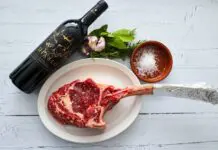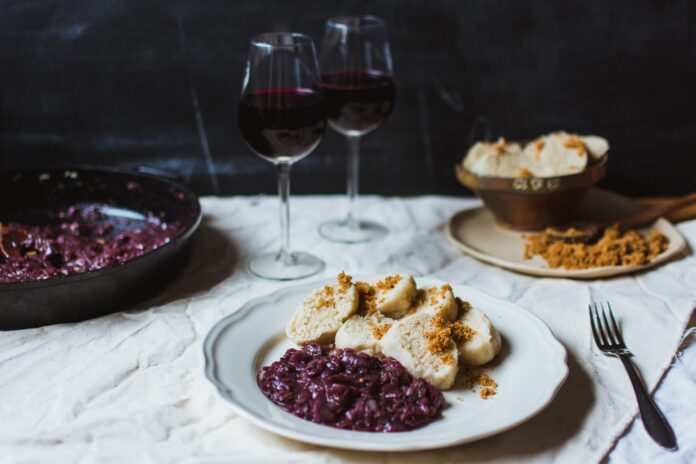
Mousse. Pudding. Icecream. What these things share in common is precisely what makes them desserts. They’re sweet.
So too is the feeling they elicit in guests at a gathering. For some, a great dessert is the final graceful note of a nice evening. For others, it’s a paramount part of their enjoyment of a meal. Whatever type of guests you might expect at a gathering, it’s always better to have a dessert plan than not.
But how to innovate on this classic post-meal treat? Why not skip the solid foods altogether, and opt instead for a unique dessert wine? Few other options are likely to leave as strong an impression or as sweet a taste on the tongue. The thing is, there are a few key differences between regular wine and a dessert wine.
If you’re planning on serving wine as a dessert at a gathering, here are a few tips to keep in mind, to make the right impression and keep your guests happy.
Treat it as a Dessert, Not a Drink
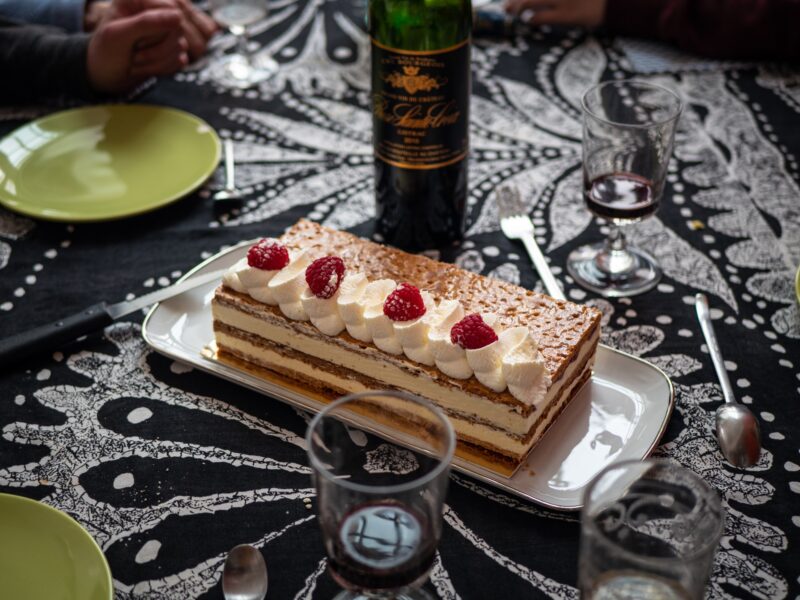
One way to ensure that your dessert wine goes over well at the end of a party is to treat it, as the host, with the respect it deserves. That means making it the primary dessert. Don’t feel obligated, just because this is a liquid, to also serve some food as dessert. People will automatically treat your carefully chosen dessert wine as a drink on the side, and with some wines, that’s really not necessary.
Or Pair it with a Tasty Dessert
Most of the time, though, you’d serve a dessert wine with food. The good thing about this is that it improves the taste of the wine as well as the taste of the food. If you do it right, that is.
Here are a few good dessert wine pairing examples:
Moscato Wine
Moscato wines aren’t the sweetest of wines, and they go well with desserts with similar characteristics. Something like a crème brûlée – not overly sweet but with vanilla flavors that match nicely with a Moscato.
Riesling
If you choose a sweet and fruity Riesling, this will perfectly complement a freshly made apple pie or, better, lemon cake. Fruit meets fruit, that’s the idea here.
Vin Santo
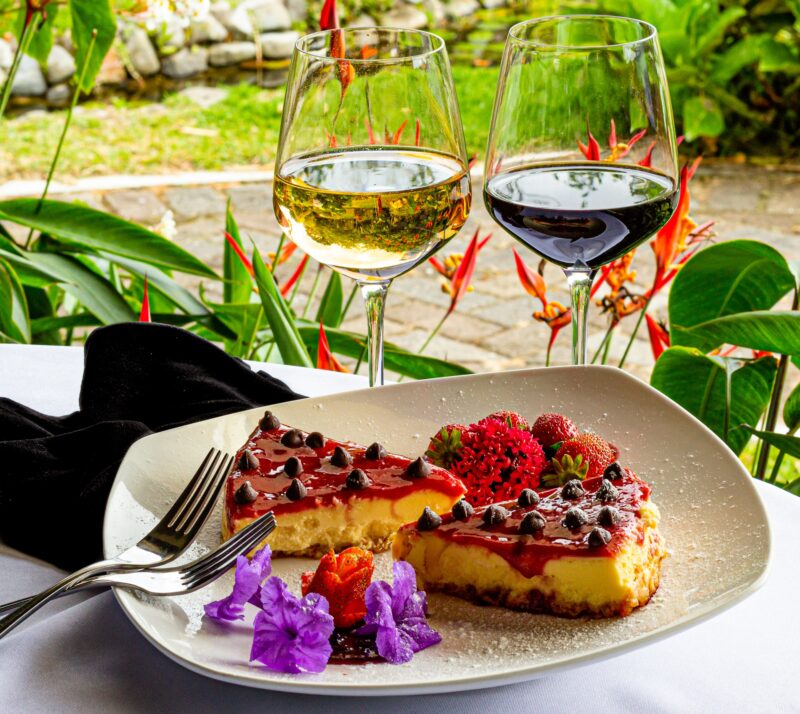
This golden Italian wine is very sweet, but more importantly, it has a clear taste of nuts. This is what makes it such a good match with tiramisu – the coffee flavors in tiramisu balance nicely with the nut flavors of Vin Santo.
Keep Chilled
If you’re a regular or even occasional consumer of wine, you’ve probably had a lukewarm cup with some ice before. Do not do this with your dessert wines. In case it hasn’t already become apparent in the last tip, presentation is very important in pulling off a glass of wine as a full dessert. That means no ice. Adding ice to a wine dilutes the flavor when it inevitably melts, adding water to it.
Optimally, you would invest in a small wine cooler. According to Cooling Wine, these refrigerators are specifically designed to keep wines at their optimal temperature and humidity for flavor and body. A conventional fridge does not share these capabilities, plus the vibration of the motor can disturb the wine.
If you have no other option but your conventional fridge, don’t buy your wine for more than two days in advance. This minimizes the negative effects of improper conditions.
Serve a Variety
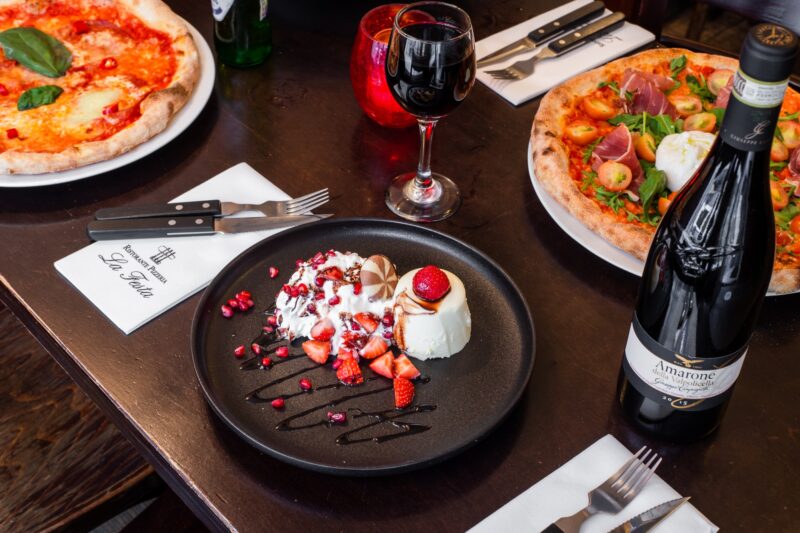
There are as many different wine lovers as there are types of wine. People have their preferences. If you want to keep all of your guests happy with dessert wine, make sure you serve more than one kind. The key terms for the layman in terms of deciphering wine flavor are dry or sweet, but in the case of dessert wines, this is classified even further.
It would stand to reason that you’d want a sweet wine as a dessert option. However, it should be noted that fewer people like very sweet wines. Consider these moderate options dessert wines at your gathering.
Moderately Sweet Wines
- Gewürztraminer
- Riesling
- Müller-Thurgau
- Chenin Blanc
- Viognier
- Serving Size
This final tip will help you solidify the presentation of your dessert wine. Just the visual of serving the right amount of your chosen wine in the right size glass sends a message. It says take your time and enjoy this. The size? Small. The amount of wine? Shallow.
Remember, your guests aren’t consuming this for the regular purpose of alcohol. It serves no means of intoxication. This is for taste. This is for the experience.
Pour each guest a serving size of about three ounces. Before it ever touches their tongue, they’ll know this is a dessert to be savored.
Seconds may be poured at the host’s discretion, but allowing guests to drink a truly full (in terms of volume) glass of wine is absolute to be avoided. The more quantity someone consumes, the less appreciation they hold for what they did.
Bring a Sophisticated Energy to your Dessert
Among alcohols, wine is heralded as the choice of the learned. It is held in many cultures as the most regal of adult beverages. This is great energy to emulate in a dessert for a gathering. People that attend will respect the ambiance, the home, and of course, the host.
However, to succeed in the presentation of wine as a dessert, special measures need to be taken. Dessert wine should be chilled in a wine cooler whenever possible. A variety of sweetness should be offered, for those who aren’t keen on strong flavors. This wine should be served in the correct portions, in carefully selected glasses.
Most importantly, though, of all the elements of presentation, it is the host’s dedication to serving this wine as a dessert. If you, for whatever reason, aren’t confident in your choice to serve a single glass of dessert wine, don’t serve it. However, if you’ve done your homework and prepared accordingly, serving wine as a dessert at your gathering can leave a deep and lasting impression!


